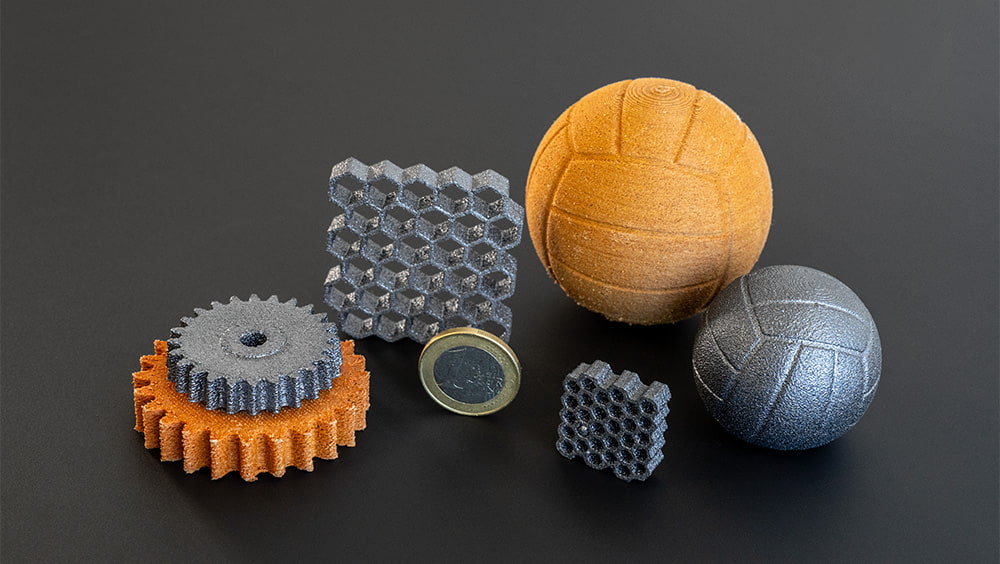3D printing of WPC for the production of near-net-shape complex SiSiC components
The project “3D printing of WPC for the production of near-net-shape complex SiSiC components”, which started on April 1, 2022 and ran until January 31, 2025, aimed to develop a sustainable and resource-saving production route for silicon-filtered silicon carbide (SiSiC) ceramics. The focus here was on the additive manufacturing of WPC (wood-plastic composite) green bodies using the fused filament fabrication (FFF) and fused granulate fabrication (FGF) processes. During the course of the project, the components were subjected to pyrolysis and infiltration with silicon in order to produce high-quality SiSiC ceramics.

Demonstrator construction jobs (wood-colored components) and the resulting SiC ceramics after siliconization (silver-colored components). (Photo: Luca Hoffmannbeck, SKZ)
The IGF project with the funding code 22307N, which was supported by the AiF and the DLR as project management organization, has successfully completed the development of innovative processes for the production of SiSiC ceramics using 3D printing. Under the leadership of Christian Schlör (until April 2024 Moritz Grünewald) and in cooperation with the University of Bayreuth, in particular the Chair of Ceramic Materials with Ms. Jalena Best and Dr. Nico Langhof, the project partners have achieved new results in additive manufacturing.
The most important results of the project include the development of new formulations for WPCs containing Novolak. The project team was able to gain important insights into material composition and compounding, which contribute to the improvement of WPC formulations.
There are also feasibility demonstrations of WPC green body production. The additive manufacturing of green bodies for SiSiC ceramics was successfully realized using the FGF and FFF processes.
Another project result is the optimization of pyrolysis. Here, dimensional stability without bubble formation during pyrolytic treatment was demonstrated, which further improves the quality of the components. By siliconizing the components, a carbon content of less than 2 wt% and a porosity of less than 2 vol% were achieved. The SiC ceramics produced in the project achieved impressive flexural strengths of over 200 MPa.
The project thus sets an important milestone for the development of resource-saving, energy-efficient and sustainable manufacturing processes for complex components that require little post-processing. The application is of interest in various industries and enables the low-wear manufacture of products. The results not only show the potential of additive manufacturing in conjunction with sophisticated materials and components, but also how it can be used to achieve sustainable and innovative manufacturing processes.
About the project
The IGF project 22307N was carried out as part of the AiF and DLR research funding program and has made significant contributions to research and development in the field of ceramic materials and additive manufacturing. In addition to the SKZ, the project partners were the University of Bayreuth and the Chair of Ceramic Materials.


